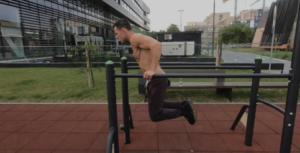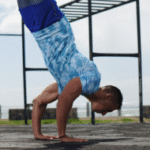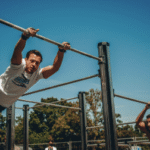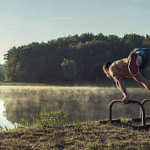Contrast Therapy for Post-Workout Recovery
Contrast therapy, the practice of alternating between hot and cold temperatures, has become a popular recovery method for athletes and fitness enthusiasts. It leverages the body’s physiological responses to temperature changes to accelerate recovery, reduce muscle soreness, and enhance overall well-being after exercise. Here’s a detailed exploration of contrast therapy for post-workout recovery:
Understanding the Physiological Mechanisms
Contrast therapy works by inducing alternating periods of vasodilation (widening of blood vessels) and vasoconstriction (narrowing of blood vessels).
Heat (Vasodilation):
Heat exposure, such as in a sauna or hot bath, increases blood flow to muscles and tissues.
This enhanced circulation delivers oxygen and nutrients essential for muscle repair.
Heat also helps relax tight muscles and reduce muscle tension.
Cold (Vasoconstriction):
Cold exposure, such as in a cold plunge or ice bath, constricts blood vessels, reducing blood flow to the affected area.
This vasoconstriction helps minimize inflammation and swelling, which are common after intense exercise.
Cold also numbs nerve endings, providing pain relief.
The Alternating Effect:
The rapid switching between hot and cold creates a “pumping” effect, which helps to flush out metabolic waste products like lactic acid.
This process accelerates the removal of cellular debris and promotes faster healing.
Benefits of Contrast Therapy for Post-Workout Recovery
Reduced Muscle Soreness (DOMS):
Delayed-onset muscle soreness (DOMS) is a common experience after strenuous exercise.
Contrast therapy can significantly reduce DOMS by minimizing inflammation and promoting muscle repair.
Decreased Inflammation and Swelling:
Intense exercise can cause micro-tears in muscle fibers, leading to inflammation and swelling.
Cold exposure effectively reduces these symptoms, promoting faster recovery.
Improved Circulation:
The alternating hot and cold temperatures enhance blood flow and lymphatic drainage.
This improved circulation delivers oxygen and nutrients to damaged tissues while removing metabolic waste products.
Faster Recovery Time:
By reducing muscle soreness and inflammation, contrast therapy can accelerate the overall recovery process, allowing athletes to return to training sooner.
Pain Relief:
Cold exposure has analgesic effects, numbing nerve endings and providing temporary pain relief.
This can be particularly beneficial for athletes experiencing muscle aches and pains.
Mental Recovery:
The act of going through the contrast therapy process can also have a positive mental effect. It can be a way to mentally reset after a hard workout.
How to Perform Contrast Therapy
Heat Exposure:
Begin with 10-15 minutes of heat exposure, such as a sauna, hot tub, or hot shower.
Cold Exposure:
Immediately follow with 1-5 minutes of cold exposure, such as a cold plunge, ice bath, or cold shower.
Repeat Cycles:
Repeat the hot and cold cycles 2-3 times, ending with cold exposure.
Rest Period:
Allow for a brief rest period between cycles to allow the body to adjust.
Practical Considerations
Temperature:
The hot phase should be warm but not scalding (around 100-110°F or 38-43°C).
The cold phase should be cold but not freezing (around 50-59°F or 10-15°C).
Time:
The duration of each phase can be adjusted based on individual tolerance and preferences.
Beginners should start with shorter durations and gradually increase the time as they become more accustomed to the therapy.
Facilities:
Many gyms, spas, and athletic training facilities offer contrast therapy services.
Alternatively, hot and cold showers can be used at home.
Safety:
Consult with a healthcare professional before starting contrast therapy, especially if you have any underlying health conditions.1
Avoid contrast therapy if you have cardiovascular disease, high blood pressure, or cold sensitivity.
Listen to your body and stop if you experience any discomfort or dizziness.
Incorporating Contrast Therapy into a Recovery Routine
Contrast therapy is most effective when performed within an hour after exercise.
It can be combined with other recovery methods, such as stretching, foam rolling, and massage.
Consistency is key; regular use of contrast therapy can lead to significant improvements in recovery and performance.

Contrast Therapy for Post-Workout Recovery
Route
Calisthenics Gym Houston Functional Bodyweight Training
Secondary phone: (346) 483-3195
Email: info@calisthenicsclubhouston.com
URL: https://calisthenicsclubhouston.com/
Monday 6:00 AM - 7:00 PM Tuesday 6:00 AM - 7:00 PM Wednesday 6:00 AM - 7:00 PM Thursday 6:00 AM - 7:00 PM Friday 12:00 PM - 6:30 PM Saturday 9:45 AM - 12:00 PM Sunday 3:00 PM - 5:00 PM





